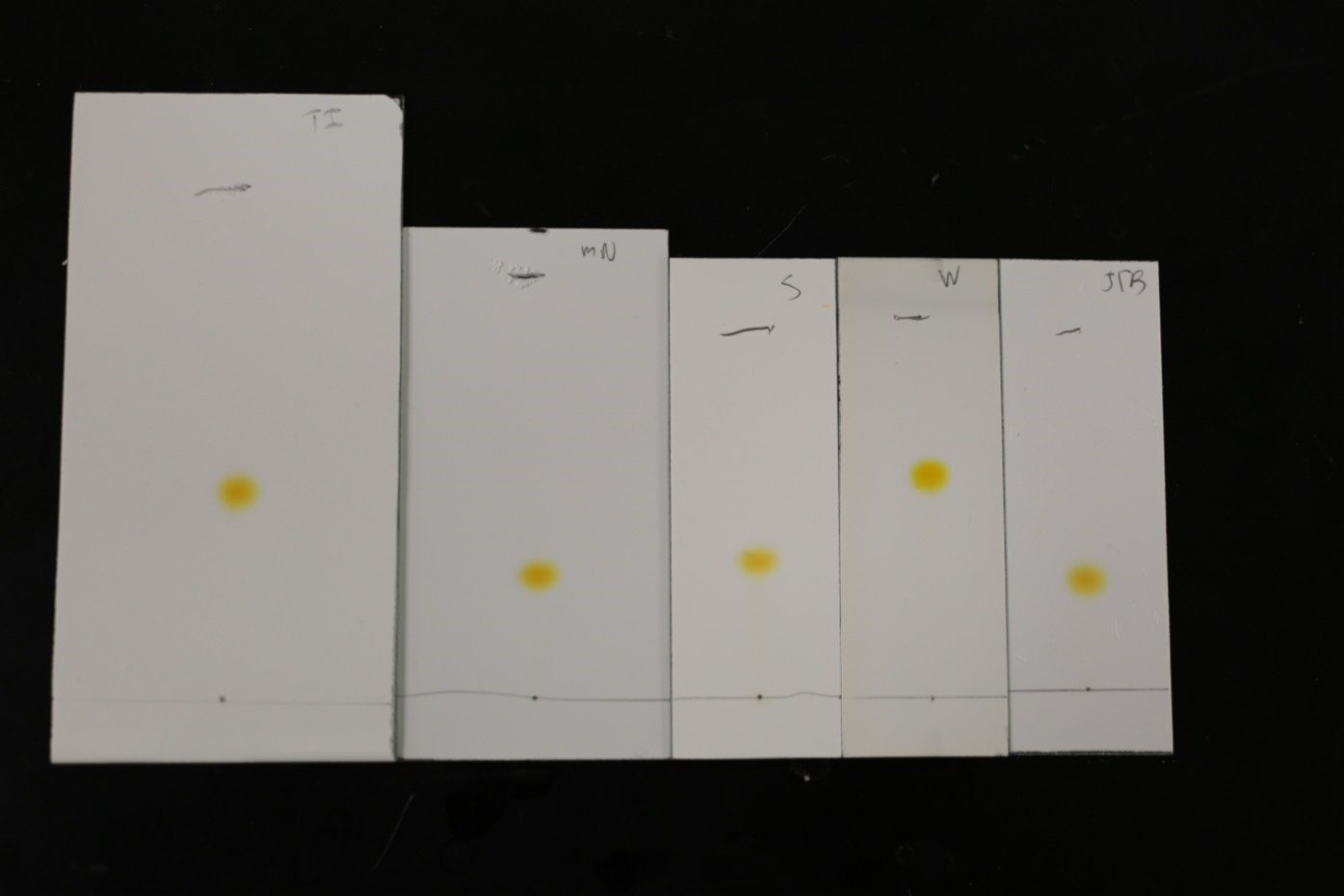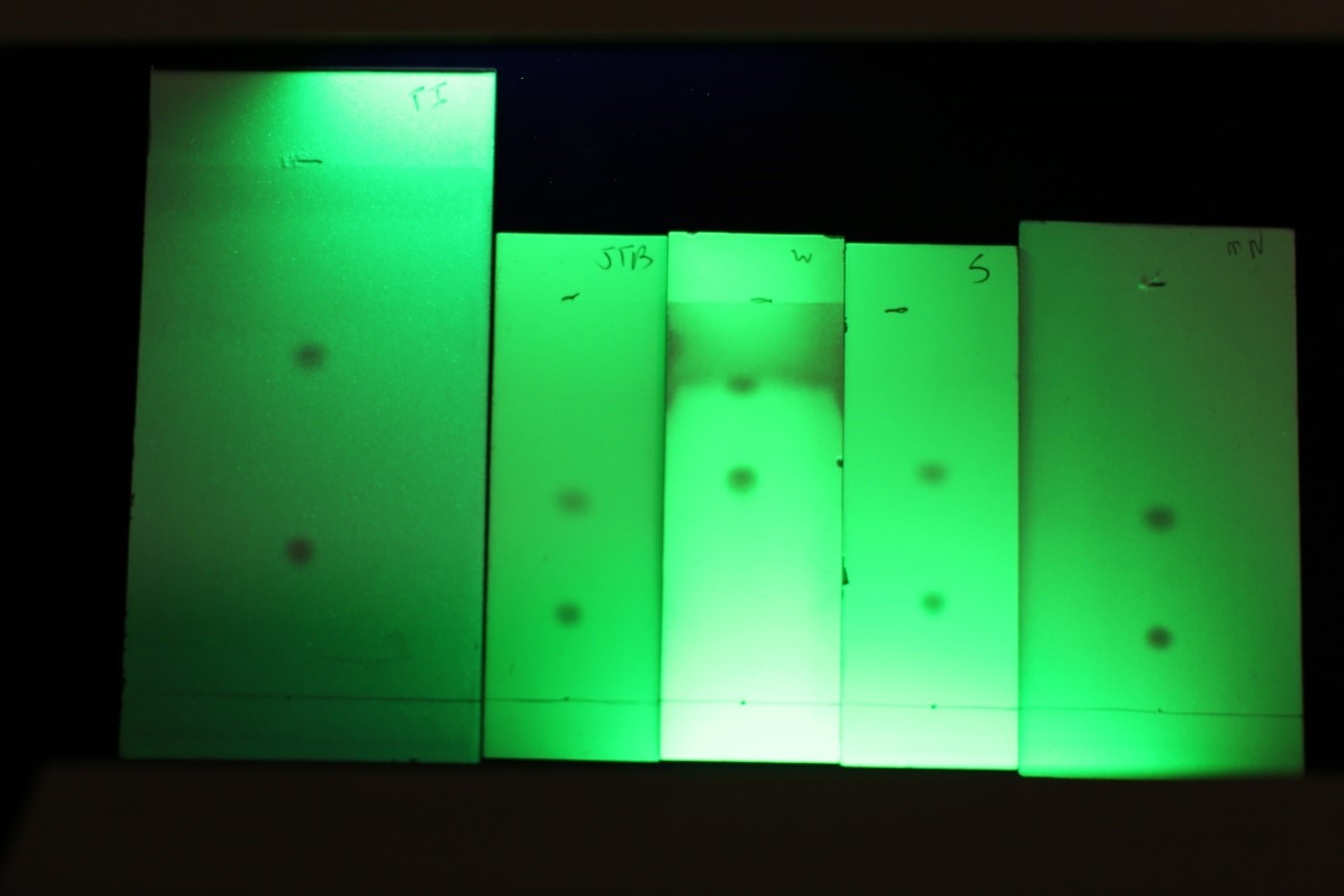Thin layer chromatography (TLC) is an effortless way to develop flash chromatography methods. The retention on a column in column volumes is CV=1/Rf, where Rf is the retention factor on the TLC plate, assuming the TLC plate is run properly. Teledyne ISCO TLC plates match the silica used in Teledyne ISCO columns, so method development is accurate. TLC plates from other vendors may not give correct results.
This example uses dimethyl yellow run in 10% ethyl acetate in hexanes.

Image above: Dimethyl yellow run on various TLC plates from various vendors in 10% ethyl acetate in hexanes.
The TLC plates were all run in the same fashion using a chamber saturated with hexane and ethyl acetate (90:10 v/v) The solvent front and spot movement from the origin were measured and the CV calculated for each plate. The results are tabulated below:
|
|
Solvent Front |
Dimethyl Yellow |
CV |
|---|---|---|---|
|
Teledyne ISCO |
7.8 |
2.7 |
2.9 |
|
1 |
6.3 |
1.8 |
3.5 |
|
2 |
5.5 |
2 |
2.8 |
|
3 |
5.6 |
3.3 |
1.7 |
|
4 |
5.4 |
1.7 |
3.2 |
|
Calculated CV values for the various TLC plates. |
|||
The Teledyne ISCO TLC plate gave the closest result to the actual column elution. The plate is larger so that the retention factor can be measured for optimum chromatography. Good flash chromatography occurs with a CV range of 2 to 5 CV corresponding to an Rf range of 0.5 through 0.2. This range generally provides sufficient retention from early eluting compounds while allowing the chromatography to be completed in a reasonable time. In addition, sample loading can be estimated by the difference in CV. As the spots will be in the lower part of the TLC plate, a larger plate makes it easier to accurately measure the Rf values and calculate loading.

Teledyne ISCO Universal Test Mix (phenacetin and N-benzylbenzamide) was run (image below).
Image above: Universal Test Mix runs with TLC plates from different vendors.
The plates were run in 50:50 hexanes/ethyl acetate v/v. Not only are the predicted column volumes different, but the relative spot movements are different. The variation in relative retention affects loading estimates.
| Plate | CV1 | CV2 |
|---|---|---|
| Teledyne ISCO | 1.6 | 3.7 |
| 1 | 2.0 | 4.8 |
| 2 | 1.2 | 1.8 |
| 3 | 1.7 | 3.8 |
| 4 | 2.2 | 5.6 |
Teledyne ISCO Universal Test Mix was run on TLC plates from different manufacturers. The variation between different TLC plates is even more pronounced with this mixture.
Teledyne ISCO TLC plates provide accurate retention and loading data for method development and are easier to use.
For more information on our Chromatography products, visit https://www.teledyneisco.com/chromatography or contact us
